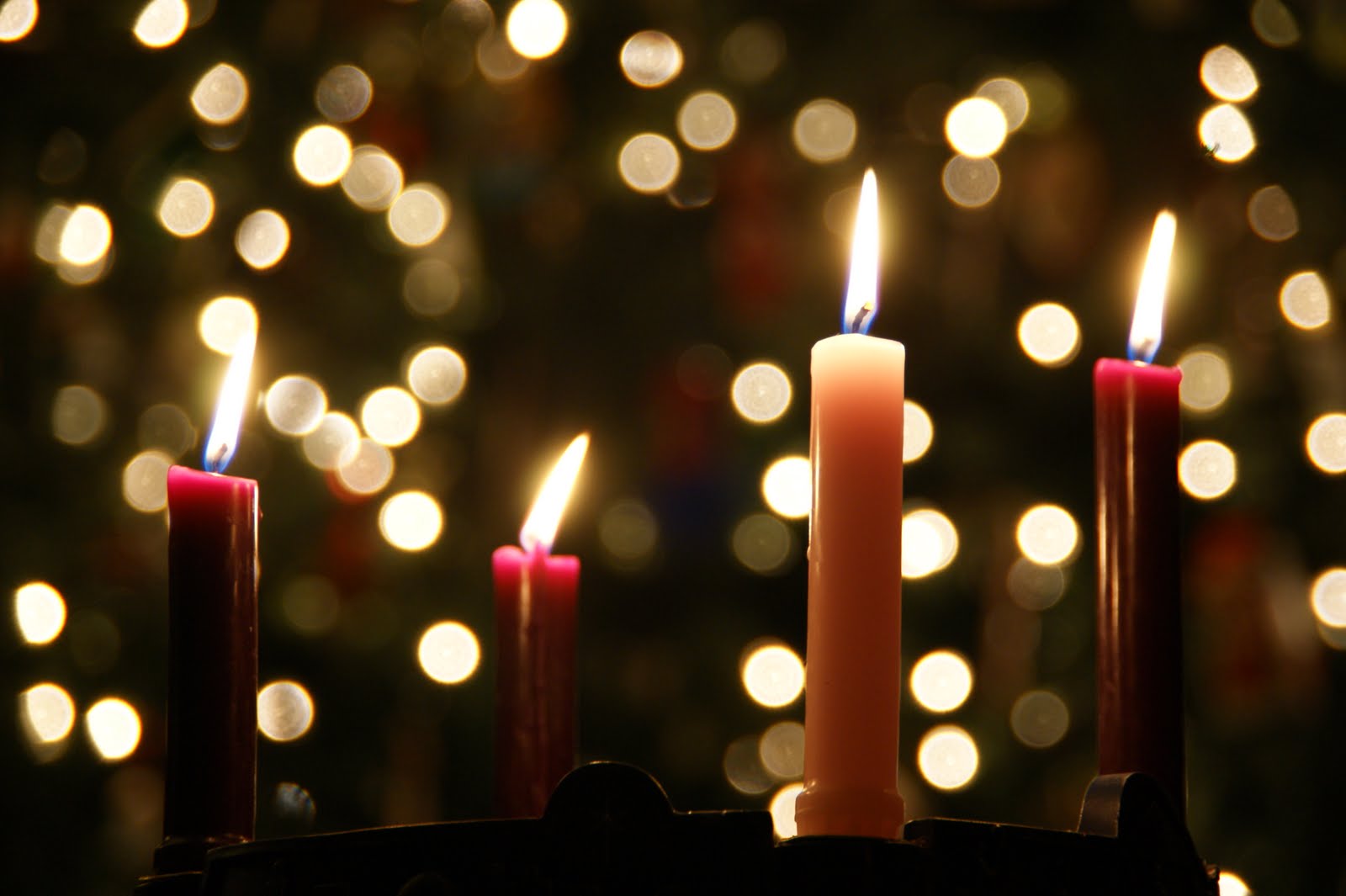
Popular among Western Christians, the advent wreath has 3 purple/red candles and 1 pink that are lit during the 4 weeks before Christmas.
During the 4 weeks before Christmas, most Western Christians (Roman Catholics and Protestants) drape their churches with purple and light candles in a wreath. Children open doors on “advent calendars” to count down the days. They are keeping Advent (the season of “Coming”). Purple is associated with penitential and ascetic exercises; it is also the color of royalty. What “coming” are they preparing for?
Originally, the weeks of Advent were mostly about Christ’s coming as Judge at the End of Days but they also came to be seen as time to prepare for the birth of Christ at Christmas.
In England, especially in the northern counties, there was a custom (now extinct) for poor women to carry around the “Advent images”, two dolls dressed to represent Jesus and the Blessed Virgin Mary. A halfpenny coin was expected from every one to whom these were exhibited and bad luck was thought to menace the household not visited by the doll-bearers before Christmas Eve at the latest.
In Normandy, farmers employed children under twelve to run through the fields and orchards armed with torches, setting fire to bundles of straw, and thus it was believed driving out such vermin as were likely to damage the crops.
In Italy, among other Advent celebrations is the entry into Rome in the last days of Advent of the Calabrian pifferari, or bagpipe players, who play before the shrines of Mary, the mother of Jesus: in Italian tradition, the shepherds played these pipes when they came to the manger at Bethlehem to pay homage to the infant Jesus.
How did all this get organized? In AD 490, Bishop Perpetuus of Tours officially declared Advent a penitential season in the Frankish Church of Western Europe, ordering a fast on three days of every week from November 11 (the feast of St. Martin of Tours) till Christmas. This forty days’ fast, similar to Lent, was originally called Quadragesima Sancti Martini (Forty Days’ Fast of Saint Martin’s) and was primarily about the Last Judgement and the End of Days. In much of Europe, St. Martin’s Day on November 11 is still the beginning of the pre-Christmas season; people eat big dinners of goose, which are very much like dinner on Christmas Day (just as dinner on American Thanksgiving is so very similar to Christmas dinner).
By contrast, the Advent season of the Roman liturgy, developing a century after that of the Frankish Church, was a non-penitential, festive and joyful time of preparation for Christmas. When the Western Church unified the liturgical season, the non-penitential nature of the Roman Advent conflicted with the longer and penitential Gallic Advent. (St. Francis of Assisi expected his followers to keep the St. Martin’s Fast.) By the thirteenth century a compromise was reached, which combined the fasting and penitential character of the Gallic observance with the Mass texts and shorter four-week cycle of the Roman Advent liturgy.
Until recently, it was still common practice for clergy to recall the association of Advent and the Second Coming by preaching about one of the “four last things” on each of the four Sundays of Advent: heaven, hell, death, and judgement.
